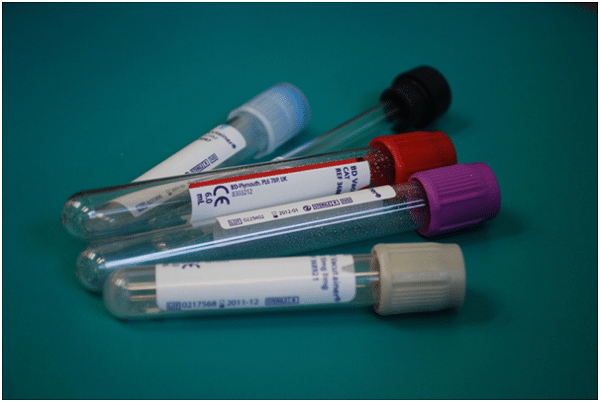Table of Contents

At the height of the Coronavirus pandemic, visits to doctor’s offices declined by almost 60% due to safety concerns, stay-at-home orders, and cancellations of non-emergency visits.
Although things are bouncing back at present, a host of convenient alternatives to conventional consultations arose at this time. So, if you’d still like to avoid an unnecessary trip to your doctor’s rooms, these are your options for healthcare at home.
Preventive Healthcare at Home
The pandemic showed us all how much we can do without, and led to some innovative shortcuts in the realm of healthcare. Nowadays, you can test yourself for a wide range of conditions thanks to home testing kits.
In many cases, these home tests are less invasive and embarrassing than in-person tests and sometimes deliver quicker results.
Alternatively, if you prefer in-person treatment, you can always get beautiful smiles with the dentist in Oakland.
Colon Cancer Tests
Colonoscopies we’re the go-to test for colon cancer for years, despite the existence of less invasive techniques. Fecal immunochemical testing is easier, safer, and just as accurate as a colonoscopy.
What’s more, you don’t need to embark on any time-consuming and uncomfortable preparations for these tests or awkward in-person appointments. You collect a stool sample and send it off to the lab in the container provided and wait for the results.
If your test is abnormal, your doctor gets in touch for a follow-up exam to eliminate the possibility of a false positive.
Genetic Tests
These tests can reveal your potential for developing hereditary diseases, like cancer. They usually involve taking a cheek swab and sending it off to the lab.
Your results can help you avoid behaviors that might increase your chances of serious illness, or take extra precautions well in advance.
Blood Tests
You can also do blood testing at home via online blood testing. It’s an easy procedure involving no needles and vials.
You simply create an online account and order your test kit. This usually arrives the next day, with full instructions on how to do the test.
Once you’re up to speed on the procedure, you take a pinprick blood sample, seal it in the provided vial and send it off to the lab. Your results appear on your secure personal dashboard within a few days.
These tests provide detailed results and suggestions to improve your health. You can also perform pregnancy tests this way.
Covid-19 Tests
These tests became available quickly for home use to prevent potentially infected people from traveling to crowded testing centers. There are a few different types of tests available.
Lab PCR Tests
Regular Covid-19 tests involve taking a nasal sample and express shipping it to the lab. You get your results within 48 hours either via SMS, email, or online.
You can get these molecular covid tests without a prescription.
Rapid Test Kits
You can buy antigen tests online or at drugstores, and you’ll receive the results in about 15 minutes. An app guides you through the process of how to test yourself and read your results. Some antigen tests require a prescription.
Paper strip tests involve taking a swab and placing it in a solution that changes color to indicate a positive or negative result.
You need a prescription for the All-In-One test, which involves placing your sample in a vial of solution and inserting the vial into a portable device. The device lights up after 30 minutes to indicate your result.
The FDA also allows you to use a home saliva test to check for COVID-19. This test involves spitting into a vial and mailing the sample to a lab.
Virtual Appointments
Telemedicine experienced a rapid upswing during the pandemic. This option allows a doctor to conduct virtual appointments, which is essentially a patient visit at home, without leaving their office.
These virtual appointments are like a Zoom meeting with your doctor and take place via a PC or phone app. During these consultations, patients can discuss their symptoms with their doctor, just like they do in their regular appointments.
The doctor can then either prescribe medication or refer them onward for further care.
Doctors have acute powers of observation, so they can often identify cues in your home environment that might cause things like allergies. They can also assess your reactions and actions to determine whether you need help urgently.
If you’re feeling really under the weather, a family member can join in the appointment to record the doctor’s advice, either in-person or virtually. When you’re feeling groggy and ill, it’s easy to forget what your doctor said, or to misunderstand them.
There are various reasons why virtual appointments are better in some cases. For starters, they’re a much better option for social distancing, but they also help save you and your doctor time.
There’s no commute involved, and you don’t need to sit around waiting for your turn. If you do show signs of infectious disease, you’re already isolated at home which can help prevent you from spreading your symptoms among other patients or co-workers.
Telemedicine is an ideal solution for mental health practitioners to provide their clients with the support and counseling they need during these times.
Staying in Great Shape
Now, thanks to modern healthcare at home innovations, there’s no reason to skimp on keeping yourself in top shape. In-person care has its perks, but it’s nice to know you can skip the hassle and the awkwardness with these at-home options.
The best part is most of these tests are affordable when compared with paying for a doctor’s appointment plus lab work, and some health insurers pay for them.
Would you like some more top tips for staying fit and healthy? Keep browsing our website.